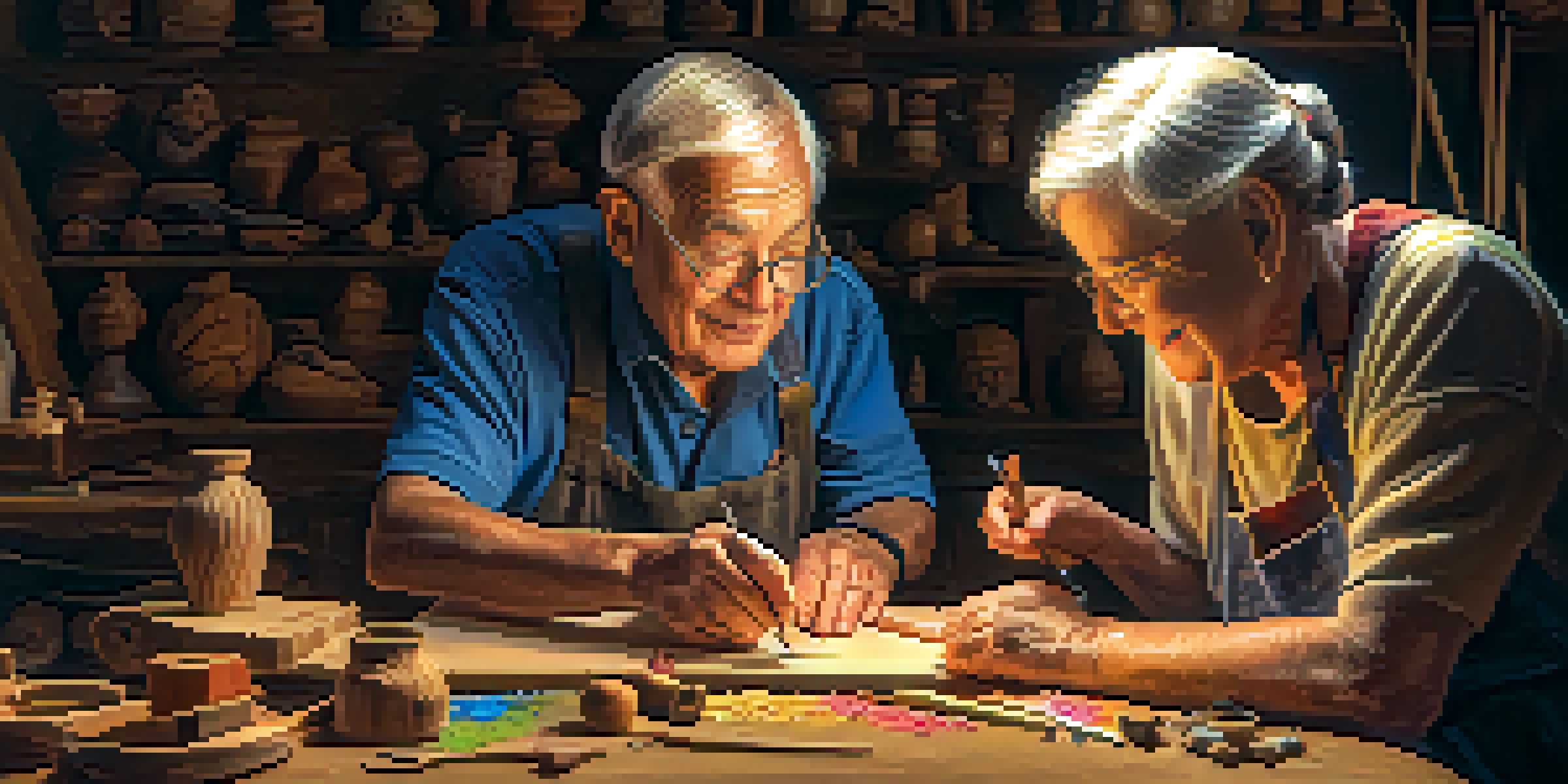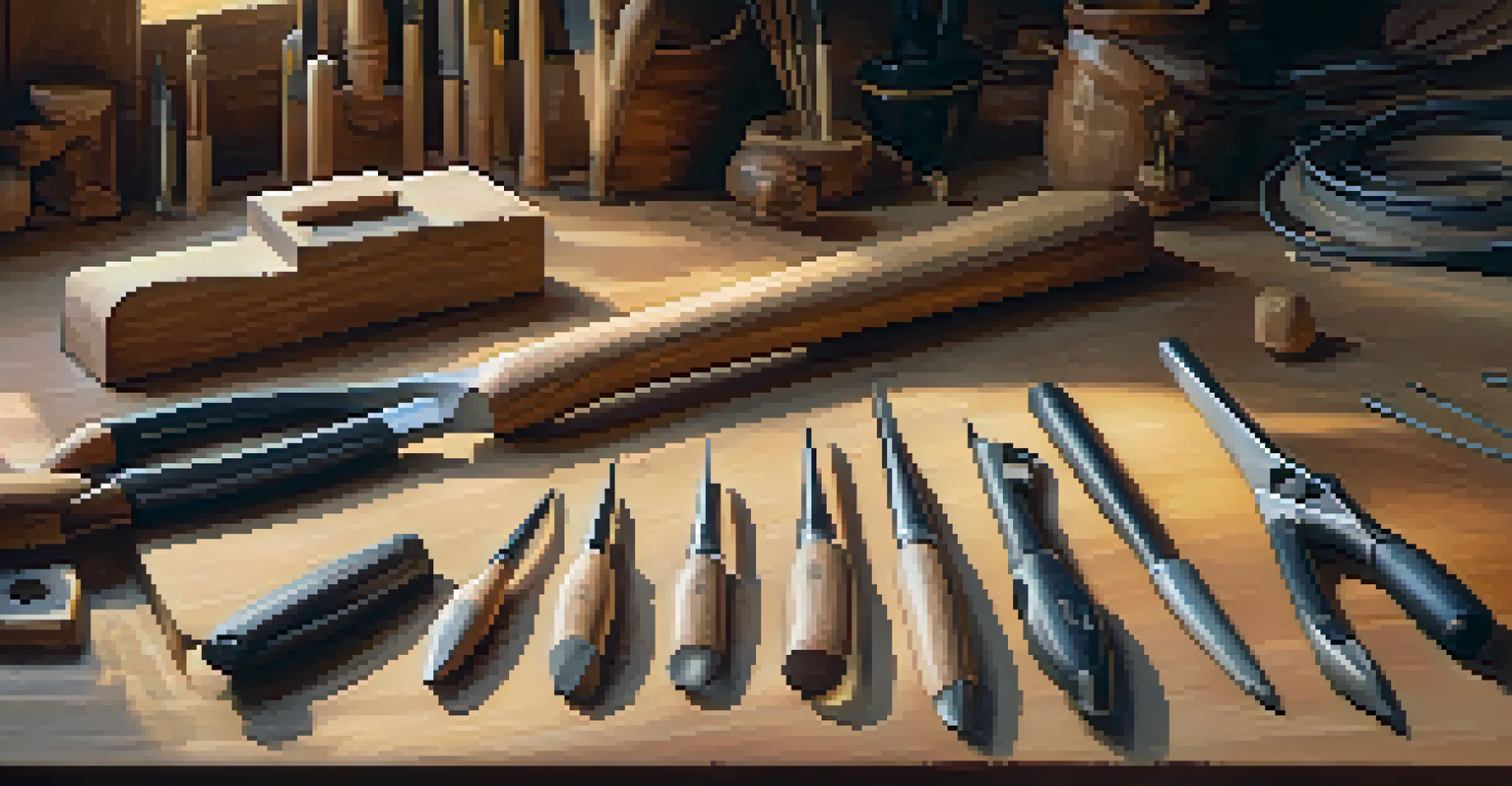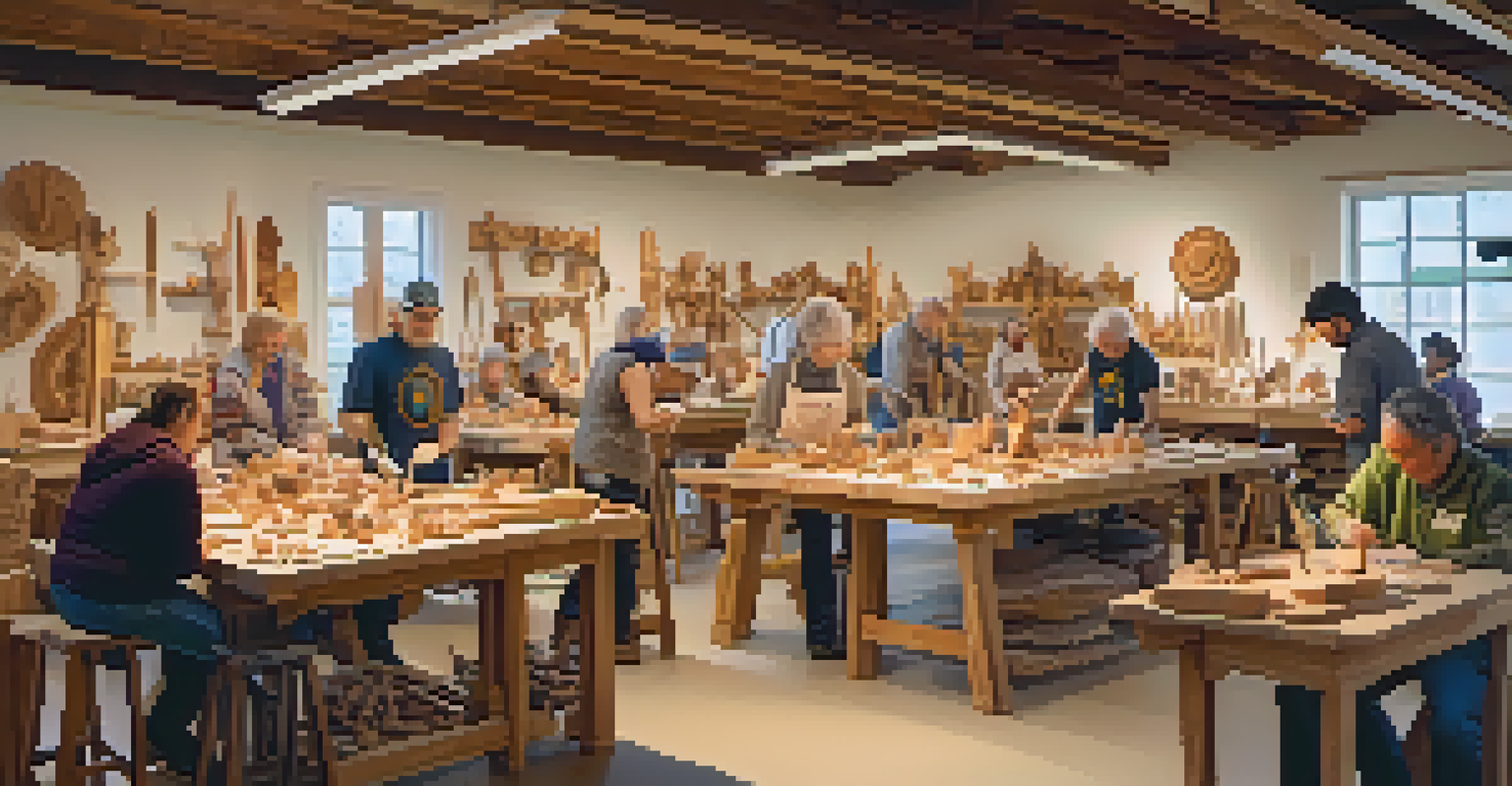Carving for the Future: Adaptive Techniques for All Ages

Understanding Adaptive Carving and Its Importance
Adaptive carving is all about making the art of carving accessible to everyone, regardless of their age or ability. It involves modifying tools and techniques to accommodate different physical capabilities and preferences. By focusing on inclusivity, we can foster a creative environment where everyone can express themselves through carving.
Art is not what you see, but what you make others see.
Imagine a grandparent teaching their grandchild how to carve a small wooden figure. With adaptive techniques, they can both enjoy the activity, overcoming any limitations together. This shared experience not only strengthens their bond but also enriches their creativity and skills.
In our fast-paced world, it's vital to embrace adaptive carving to ensure that no one is left out of this fulfilling art. By understanding and implementing these techniques, we pave the way for future generations to engage in meaningful creative activities.
Tools That Make Carving Accessible for Everyone
Choosing the right tools is essential for adaptive carving. Lightweight, ergonomic carving tools designed with comfort in mind can help reduce strain and make the process enjoyable for all ages. Tools with larger grips or those that require less pressure can be especially beneficial for seniors or younger carvers.

Consider tools like soft-grip knives or electric carving devices that require minimal force. These options allow users to focus on creativity rather than struggling with the mechanics of carving. When the right tools are in hand, the possibilities for creativity are endless.
Adaptive Carving for All Abilities
Adaptive carving emphasizes inclusivity, enabling individuals of all ages and abilities to enjoy the creative process together.
Investing in adaptive tools not only enhances the carving experience but also encourages more people to participate. The right equipment can transform a daunting task into a delightful journey of creativity and self-expression.
Techniques for All Ages: Carving Together
Learning adaptive techniques can make carving a family affair. Simple methods, such as using templates or guided designs, can help newcomers grasp the basics while still allowing seasoned carvers to explore their creativity. This approach fosters a collaborative environment where everyone can learn from each other.
Creativity takes courage.
For example, using a soft clay model to practice carving can build confidence before working with harder materials. This way, children can experiment without the pressure of making mistakes. The joy of creating something together often outweighs the final product itself.
By encouraging intergenerational carving sessions, we can bridge the gap between ages and abilities, creating lasting memories. These bonding moments not only nurture creativity but also instill valuable life skills that can benefit all participants.
Incorporating Technology in Adaptive Carving
In today's digital age, technology plays a crucial role in facilitating adaptive carving. 3D printing, for instance, can allow carvers to create intricate designs that might be difficult to achieve by hand. This technology opens up a world of possibilities for those who may have limited physical capabilities.
Additionally, online tutorials and virtual workshops can provide guidance to both beginners and experienced carvers. These resources often include adaptive techniques and tips that can make carving more accessible. The online community also offers a supportive environment for sharing ideas and gaining inspiration.
Essential Tools for Accessibility
Using ergonomic and lightweight tools can significantly enhance the carving experience, making it enjoyable for everyone.
Embracing technology doesn't mean losing the traditional essence of carving; instead, it enhances the experience by making it more inclusive. By combining the old with the new, we can ensure that carving remains a vibrant art form for everyone.
Creating a Supportive Carving Community
Building a supportive community around adaptive carving is essential for fostering creativity. Local clubs, workshops, and online forums can serve as platforms for sharing ideas, techniques, and experiences. A nurturing environment encourages people of all ages and abilities to participate and grow.
Consider hosting community carving events where individuals can share their skills and learn from one another. These gatherings not only promote inclusivity but also create lasting friendships built around a shared passion for carving. Everyone can contribute, making it a truly enriching experience.
By cultivating a space that celebrates adaptive carving, we can inspire others to join the movement. A strong community can empower individuals to express themselves creatively and push the boundaries of what is possible in the world of carving.
Safety First: Ensuring a Risk-Free Carving Experience
Safety is paramount when it comes to any form of carving. Ensuring that everyone, especially children and seniors, understands proper techniques and tool usage can prevent accidents and injuries. Taking the time to teach safety measures can make the carving experience enjoyable and worry-free.
For instance, using cutting mats or protective gear can significantly reduce the risk of injury. Additionally, setting up a safe workspace that minimizes distractions can help everyone focus on their craft. Encouraging a culture of safety fosters confidence among carvers of all ages.
Building a Supportive Carving Community
Creating a nurturing community around adaptive carving fosters collaboration, encourages participation, and inspires creativity among all members.
When safety is prioritized, participants are more likely to embrace carving as a lifelong hobby. Creating a risk-free environment allows everyone to explore their creativity without fear, paving the way for future generations of carvers.
Celebrating Achievements in Adaptive Carving
Celebrating achievements, big or small, is vital in the world of adaptive carving. Whether it's completing a first project or mastering a new technique, recognizing these milestones encourages participants to continue their journey. Acknowledgment can come from family, friends, or the carving community, reinforcing a sense of accomplishment.
Consider organizing showcases or exhibitions where carvers can display their work. This not only honors their efforts but also inspires others to engage in carving. Sharing progress on social media can also create a supportive network that cheers each other on.

Ultimately, celebrating achievements in adaptive carving fosters a positive atmosphere, motivating everyone to push their creative boundaries. By highlighting successes, we create a culture that values growth and exploration in the art of carving.